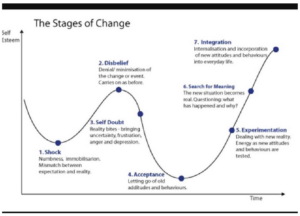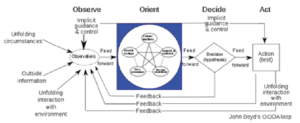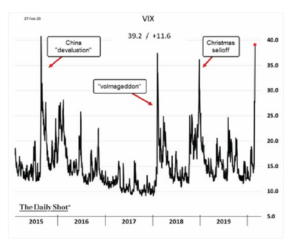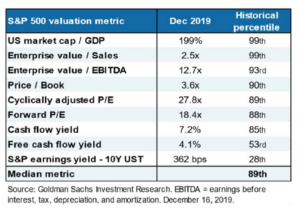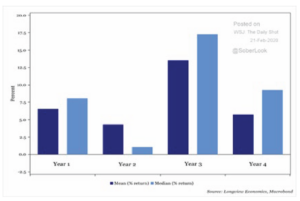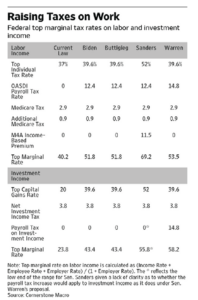09 Apr WealthManagement – Procyon: Institutional Due Diligence With a Private Wealth Overlay
Procyon Partners was founded in 2017 by financial advisor Phil Fiore with the support of Dynasty Financial Partners. Fiore previously built one of the most prominent institutional consulting groups at Merrill Lynch and then UBS before going independent. And while much of the RIA’s $7 billion business is now private wealth, the institutional DNA still runs through it.
That includes the RIA’s portfolio management process. The firm’s proxy model portfolio, explained below, consists of a 20% allocation to alternatives, which some may consider high for a retail wealth management firm. And that allocation is not through an alternative platform, such as iCapital or CAIS, but via Procyon’s proprietary funds.
Antonio Rodrigues, partner and chief investment officer at Procyon, provides a peek inside the RIA’s 50/30/20 model portfolio.
The following has been edited for length and clarity.
WealthManagement.com: What’s in your model portfolio?
Antonio Rodrigues: If you’re going to compare what we’re doing to a normal 60/40 portfolio, we would say it’s going to be 50% equity, 30% fixed, and 20% in alternatives.
We’re utilizing mostly passive strategies in our equity bucket, individual ETFs for the most part on the equity side, whether it’s large cap, small, mid, international or emerging markets. And then we’ll also use some thematic ETFs like cybersecurity oil. We were buying some energy-related specific ETFs towards the bottom of 2020 and held them for a couple of years.
On the fixed-income side, we’re using active managers, and we’re trying to keep our duration close to the benchmark.
And for alternatives, we’re mainly using our two funds if the client qualifies. If they don’t qualify, then we will use only one of our private funds that they can qualify for and will find an alternative, maybe a 40 Act fund, as a proxy for our fund.
WM.com: What’s in the equity and bond buckets, and what’s driving those allocations?
AR: What drives the allocations is going to mainly be our macro investment committee voting members. Each quarter, we have a survey of all the members of the committee. We weigh the answers, and we act accordingly. And we essentially ask them, “If you’re 60/40 or whatever the target is, what are your tactical weightings? And here were the weightings last time, and here are how you would answer it today.”
We use benchmarking in order to gauge our success. On the equity side, 75% of our benchmark is the Russell 3000, and 25% is the ACWI-ex-U.S.
On the fixed side, it’s just the Bloomberg Aggregate Bond Index. And on the private side, there’s no real benchmark there. That’s more manager-by-manager.
We will often substitute or enhance our equity or fixed-income targets with individual securities or SMAs. We do have a series of in-house managed equity portfolios and own several SMA managers across the firm for both stocks and fixed income.
WM.com: Have you made any allocation changes in the last six months to a year?
AR: About a year ago, we had an overweight to China, and we exited that overweight as we saw that their reopening did not occur. We’re market-weight or neutral on emerging markets right now. We also have added a little bit to small-cap and to developed international simply because the expected return of diversion from the mean has been so dramatic. In public equities, typically, that’s going to revert to the mean versus the U.S.
When it comes to holdings themselves, we’re using Vanguard, Schwab ETFs. We’ve got 23% in growth. We’ve got 20% just in large cap blend. We’re using the Capital Group Dividend Value ETF at 7%. We’ve got a 5% position in the NASDAQ Cybersecurity ETF. We’ve also added to the Pacer U.S. Cash Cows 100 ETF. We’ve gotten out of small-cap value over the last year. We’ve added back to small-cap growth with the Pacer U.S. Small Cap Cash Cows ETF as well.
We are of the mindset that there was always going to be three rate cuts this year because we tend to believe the Fed. We think if those cuts occur, we’re going to get a greater beta out of the growth side versus the value side. So far, it hasn’t been priced in that that will occur, but we’re keeping an eye on it as some of the leadership is changing in the market.
On the fixed income side, we have moved closer to duration. We’ve essentially exited most of our cash positions that we would’ve held over the last two years. We were overweight cash; now we’re back to market weight when it comes to fixed income. On the duration side, we’ve been short for a long, long time. We’re moving closer to neutral duration. But by and large, we have active managers in there, so we don’t want to over-manage the managers either. We’re tactical where we need to be on a macro basis, but we give the managers there a lot of leeway.
WM.com: How are your private funds structured, and what do they invest in?
AR: We launched two flavors: One is a vintage drawdown series, so that’s Procyon Vintage I. Inside of that is all private equity and venture capital. We have funded three managers so far and looking to fund a fourth manager that was launched in July of last year. We are charging no management fee and no carry for current Procyon clients to invest in there. We get the same revenue whether you own shares of Apple or a treasury bond or you own a Procyon fund. We wanted to be true fiduciaries, and we wanted to make sure we didn’t have just a single source solution. So we’ve put together a couple of parties that are all independent of each other to create those funds and deliver them.
The evergreen structure was launched in the fourth quarter of last year. It is a 307C fund, whereby all the investments inside the evergreen structure are going to be hedge-funded in private credit and a little bit of GP. We’ve identified six managers there, and we’re looking to fund all of them by the end of April. The target minimum raise is $25 million. So once we get to the $25 million, we’re able to deploy all that capital for accredited investors. Even though the underlying investments are QP only, they’re very high minimums, $5 and $10 million minimums. Again, we take no carry nor management fee for Procyon clients. We are developing a share class whereby we can allow other RIAs to invest for a small management fee attached to it.
WM.com: How is the first fund you mentioned, Procyon Vintage I, structured?
AR: It’s a feeder fund, and that one is likely going to close at the end of this year. We’re going to close that fund once we fund it, and that’ll have a 10-year lockup for investors, and those are QP-only investments.
WM.com: How are you getting access to these private equity managers?
AR: We’ve got a big network within the firm of advisors and people that have worked in the industry for a while, so we have a lot of inputs there. There are a lot of people who are knocking on our door to get into the funds and be a part of our platform. We didn’t want to use iCapital or CAIS to source the funds because if we could get them on the platform, then we wouldn’t create our own feeder. We would essentially just buy them on the platform. So we hired a firm owned by F.L. Putnam, Atrato Consulting. Atrato’s sole focus is to do due diligence and source new managers. They have sourced the majority of the managers there. We gave them the criteria of the management we were looking for, which are high minimums, off-platform, and hard to access, and that’s what they found us.
We’re looking at a diversified basket of managers. So what’ll happen is, in the vintage fund, investors will commit capital, and if there’s enough there to fund another manager, then we will fund that manager. And then it’s a drawdown structure. Each of the managers will have their own capital calls on the fund. So each of the commitments will get funded little by little over the course of one to two years. And then what will happen is there’ll start to be some distributions, and that may be sort of self-funding going forward.
WM.com: What differentiates your portfolio?
AR: On the public equity side, we’re delivering low-cost, tax-efficient, tactical, and thematic. We have a top-down understanding of the economy. We have a bottom-up understanding of the portfolio, and we run it that way. But it’s very hard to differentiate on that these days. You want to make sure people have access to public markets in an efficient way. So what we’re really trying to do is find access to managers that are hard to access.
We’re looking for funds that may be closed, but willing to accept some interesting new deposits or new clients. We’re doing a lot of work on the alternative side because that’s where most of the work belongs. It’s very difficult to identify good managers on the alternative side, so we’re delivering a ton of value there. And then we’re getting access. So we’re getting calls from people who have been investing with us now in alternatives, and they may have a co-invest opportunity for some unique clients. We’re working really hard on getting access to unique opportunities for all the clients.
WM.com: What’s your due diligence process for choosing asset managers and funds?
AR: We have a small group within our walls called the Manager Research Group. It’s a committee whose job is to run all the due diligence on all the managers, and it was born a couple of years ago. We took Procyon’s institutional due diligence process because we have several billion in institutional funds, 401(k)s and pensions. We took that due diligence process and overlayed the private wealth prism on it. In institutional due diligence, it’s all about meeting metrics—backward-looking. In private wealth, it’s all about what the expected return is going to be. And so we took those two things and built them together and created our manager research group. They meet on a monthly basis.
We look at about 11 different pillars. A lot of that has to do with manager tenure, fees, who owns the fund, how much is in the fund distribution, potential distributions, and then you have peer group rankings and so forth. They all have to be within the top two quartiles of all the data in order to be considered a good fund.
For private, it’s vastly different. The data is not readily available to look at the market as a whole easily. We wind up having to go manager by manager; we have a voting group made up of the main members of the main committee, and we get managers lined up, they get proposed, and we do the research, and we vote them in or out.
WM.com: What’s the opportunity you see in investing in alternatives?
AR: You’re supposed to be fully diversified in a portfolio. Now if you’re not an accredited investor or higher, it’s difficult to get access to these kinds of things, number one. So there are barriers in place for a reason, and so we adhere to those. But what ends up happening is once you become accredited and qualified, then all new doors open up, and that’s the way it’s built. What winds up happening is there’s this big demand in the private markets because the public markets have become so much less diversified.
On top of that, nowadays, you can structure investments in alternatives with much better liquidity structures than you would have been able to 10 years ago. The evergreen structure would’ve been more difficult. We do believe there’s a premium to be earned when you have less liquidity, so we want to capture that for the clients. To clients and even to some professionals, the public markets more and more look “rigged,” and people don’t trust them as much.
WM.com: Do you have any interest in bitcoin ETFs or getting into the crypto markets at all?
AR: We’ve entered the crypto markets on a non-discretionary basis over the last several years. As the demand came up for us internally, we wanted to provide the right solution as opposed to referring everyone. So we partnered with a company called Eaglebrook Advisors, and essentially we hold everything in cold storage. And now with the advent of the ETF and the size and the scope of them, it becomes more of a tactical decision.
We have approved on our recommended list, one bitcoin ETF. Essentially to us, a bitcoin ETF as it’s structured today is just all about what the fees are because they should all have very low tracking errors and so forth. But we have not made an active decision to allocate to bitcoin, and if we do, that would be in the alternatives portion of the portfolio.

